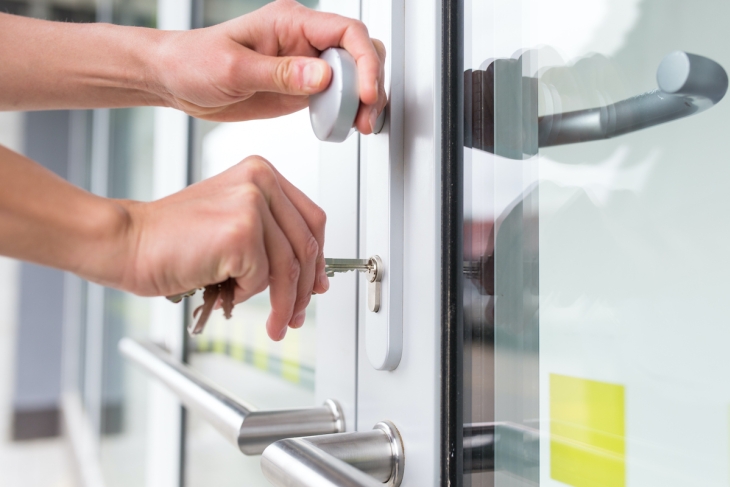As coronavirus cases continue to rise, Colorado’s two largest school districts, Denver and Jeffco, recently announced their intention to start the school year remotely. The sudden shift represents the third back to school plan for both districts in as many months: Back in May, both came out of the gate with a hybrid model, but switched to in-person learning in response to parent demands. With classes set to resume in a matter of weeks, the tortuous affair has students and families strapped into an emotional rollercoaster, careening from reopening plan to reopening plan, and wondering when the ride is supposed to stop.
What’s transpiring here in Colorado is a microcosm of what’s happening nationally. From coast to coast, school districts have been tasked with the unenviable job of restarting schools during a raging pandemic, when even a few months ago they could safely assume that the healthcare crisis would be more under control. With districts running into reopening roadblocks, a growing number of them—including ten of the nation’s fifteen largest—have not only elected to continue with fully remote learning, they’ve decided to do so at least through the first semester, which is really astonishing if you consider schools have been in virtual learning mode since mid-March. I recently spoke with a superintendent who told me his district was going to stay all virtual through January 2021, the rationale being this would get them past flu season too. To be sure, flu season usually lasts through April, but these are trying times.
Last April, my colleague Robert Pondiscio wrote, “It is a fantasy to believe that we can stem the effects of months without real school by ginning up instructional capacity on the fly in unfamiliar forms in the midst of a public health crisis.” The evidence is pretty clear that remote instruction is a poor substitute for in-person learning; it’s “education theater,” akin to the type of “security theater” we became accustomed to post 9/11—reassuring, yet falsely so. To wit, a recent study by McKinsey & Company estimated that if students remain entirely virtual through January 2021, students could lose up to eleven months of learning versus twelve to fourteen months with no instruction at all. If this is the case, why go through the histrionics? If districts have decided they just can’t open, shouldn’t they stay closed? Lay everyone off, bank the money (or give some of it to parents), and wait for a vaccine?
Of course, no one would seriously advocate for blanket layoffs during a three-headed crisis, so these questions are deliberately tendentious. It’s difficult to overstate the complexities involved in the safe reopening of schools, but landing on fully remote instruction as an answer for the coming semester reflects a widespread failure of imagination and creativity. To be fair, thirty-three states currently have infection positivity rates above what’s recommended for reopening, but what about the seventeen states that are below the threshold? Why aren’t schools there trying harder to make in-person learning work? If they can’t, why not provide direct educational assistance to parents?
Without getting into all of the back-and-forth on the merits and inequities of “pandemic pods,” why can’t schools formally create their own version of them? With the system’s support, pod creation wouldn’t be limited to those with the means and wherewithal to self-organize on social media. What’s more, schools and districts are uniquely positioned to connect interested parents with one another, especially those who might be struggling, but they’ve been sitting on their hands when it comes to helping out with pods or creating something analogous that would allow more students to return to school.
Another way to safely reopen schools would be to move as much learning as possible outdoors, something that most districts seem hesitant to do. Even though schools beat earlier plagues with outdoor classes, that lesson appears to have been lost upon today’s state and district officials. Some of the overheated media coverage on the risks posed by the virus has likely had a chilling effect. Yes, there will be inclement weather and students and teachers will have to bundle up when it gets cold, but this is still infinitely better than learning through the keyhole of Zoom. If anything, virtual learning should be the rainy-day backup to outdoor learning.
In online forums, many parents say they fear virtual learning will be a disaster. Despite this, we continue to tell ourselves that educationally effective virtual learning—an oxymoronic phrase—is the least bad option in light of the virus’s resurgence. It’s an understandable sentiment, and one that most teachers now ostensibly support. But no matter how many entreaties we make about the necessity for schools to step up and to get better at virtual learning quickly, our shared desperation and misplaced optimism won’t make it so.
To be clear, there’s a difference between the involuntary version of virtual learning many schools will be returning to and full-time online learning as delivered by those with expertise. By virtue of time, training, and infrastructure, the latter are far better positioned to offer robust and meaningful learning experiences than the school systems that were suddenly and haphazardly thrust into uncharted territory. Indeed, there’s a glaring shortage of out-of-the box thinking when it comes to the conundrum of school reopening, but it’s not too late for us to reframe the way schools are looking at returning and redefine what it will take to educate every student during this extraordinary moment.




